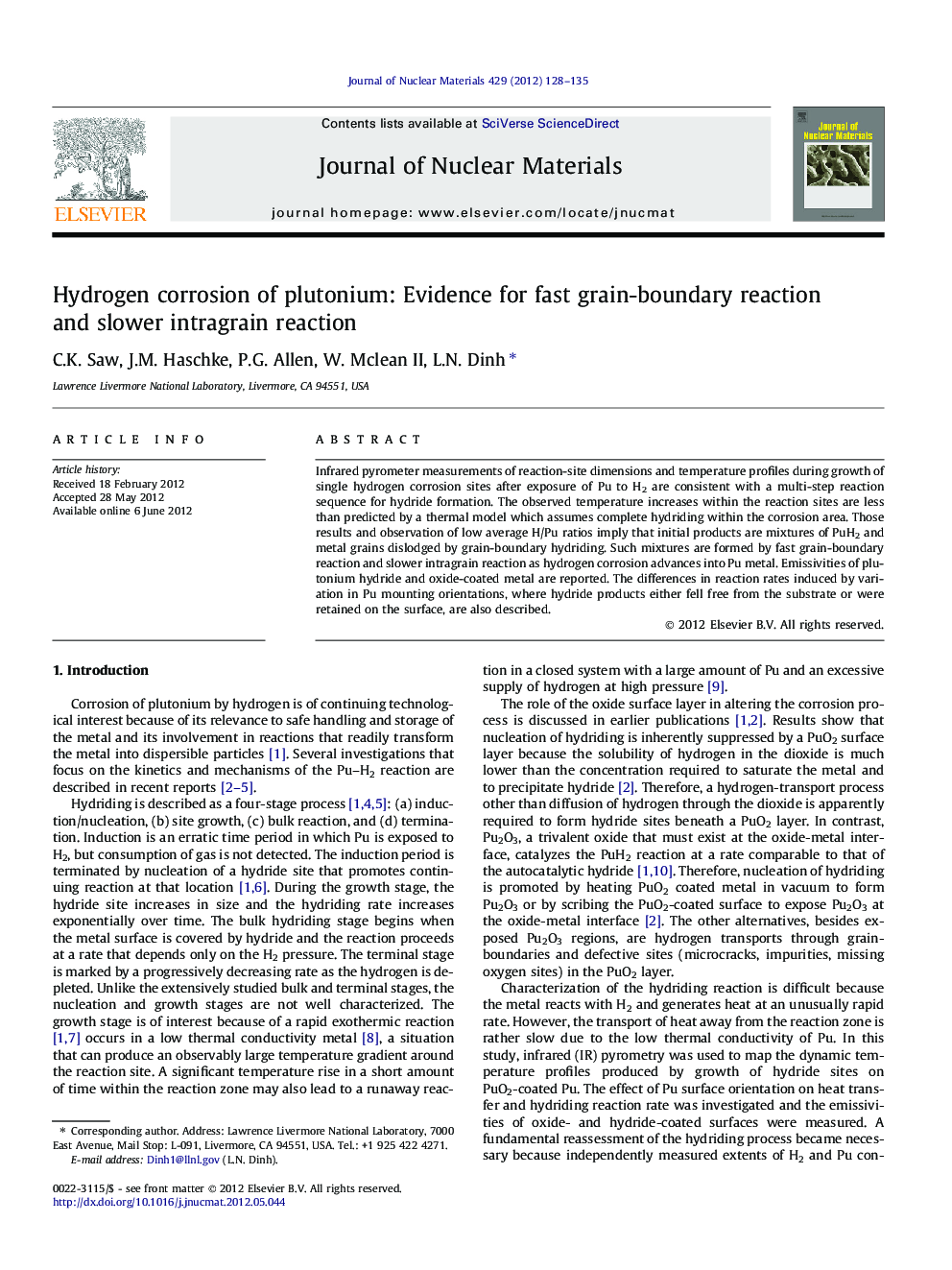| Article ID | Journal | Published Year | Pages | File Type |
|---|---|---|---|---|
| 1566120 | Journal of Nuclear Materials | 2012 | 8 Pages |
Infrared pyrometer measurements of reaction-site dimensions and temperature profiles during growth of single hydrogen corrosion sites after exposure of Pu to H2 are consistent with a multi-step reaction sequence for hydride formation. The observed temperature increases within the reaction sites are less than predicted by a thermal model which assumes complete hydriding within the corrosion area. Those results and observation of low average H/Pu ratios imply that initial products are mixtures of PuH2 and metal grains dislodged by grain-boundary hydriding. Such mixtures are formed by fast grain-boundary reaction and slower intragrain reaction as hydrogen corrosion advances into Pu metal. Emissivities of plutonium hydride and oxide-coated metal are reported. The differences in reaction rates induced by variation in Pu mounting orientations, where hydride products either fell free from the substrate or were retained on the surface, are also described.
